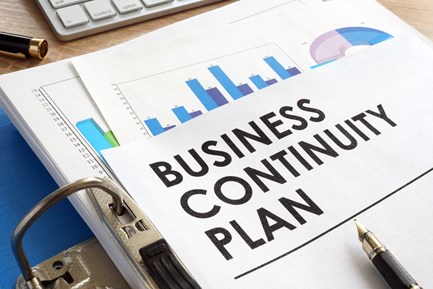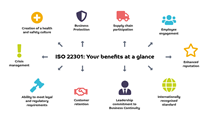It can be difficult to know where to start the Business Continuity Planning process so these simple steps will enable you to decide how you can start yours.
Firstly, what is Business Continuity? Broadly speaking Business Continuity is risk management area that has 2 simple objectives:
- To minimise the likelihood and impact of disruption to your supply of products and services to your customers.
- If you should experience disruption, to be able to respond in a coordinated manner, maintaining maximum certainty for your stakeholders whilst you re-establish your product/service delivery with minimal impact to, or loss of, customers.
Watch this 2-minute explainer video on You Can't Plan for Everything but can you Plan for Anything. |
|
In simple terms, Business Continuity comprises of 3 elements:
Continuity - the continued and uninterrupted delivery of your products and services to your clients.
Resilience - the ability to avoid/respond to incidents and events so that you continue to deliver your products and services.
Response - should you experience an event that disrupts your business, you can respond in a coordinated, cohesive manner, reinstating your service/product delivery within your recovery objectives.
Like any process, if you are not clear on what you are trying to achieve, you won't get anywhere fast. The steps below will help you gain clarity around what you are trying to achieve - your Business Continuity Objectives. Key to this is understanding your business from a BC perspective, which will help you start your own Business Continuity Planning.

Business Continuity Planning
Step 1 - Map your Business Process. Create a flow diagram of how your products/services are produced including internal business functions and supply chain. It should also incorporate the timelines at each stage of the process - how long goods are on the water or in the air from overseas manufacturers/suppliers, stock holdings maintained by customers.
Business Continuity Timeline
Step 2 - What is your Tolerance for Disruption? This is a critical step in the process and drives the whole process. Capture for each of your products and service - how long, if you are unable to deliver, a product/service will either:
- Your customers have to go elsewhere to avoid disruption to their own business
- Your reputation is irreparably damaged from which you can't recover
- You run out of funds
This is what's known as your Maximum Period of Disruption, or MTPD. If you have multiple products/services they may well have different tolerances for disruption and contribute differently to the business income/profit - this will help prioritise the process.
Step 3 - How quickly can you recover the business functions/assets/resources that enable you to deliver your products/services? You need to identify what business functions/assets/resources you can or can't recover in your MTPD. Those that can't will need Continuity Arrangements put in place further into the process and to do this you will need to choose the correct business continuity strategy.
Business Continuity Objectives
Step 4 - Agree what your Business Continuity Objectives are. With the above information you can begin to agree what your objectives are, and these should include high level timescales or Recovery Time Objectives for either product/service delivery and/or the underlying business function/asset/resource that supports these, or a level of capacity that needs to be reinstated, for instance:
Replicated Server online - 24 hours
Alternative Distribution function operable 2 weeks
Product A - 50% assembly capacity in 4 weeks, 75% 6 weeks, 100% 8 weeks
Structuring the Process
Step 5 - Having established your objectives, you can now consider how to structure the Business Continuity Plan. First thing to note is that your Business Continuity Plan doesn't have to cover all of your activities, you choose what is in Scope and Out - you may choose to leave out a product line that is nearing the end of its product cycle.
It can help to break your Business Continuity Planning into sub-plans focused on functions - IT, distribution or supply chain, or sites. Breaking it down into bite-sized chunks makes the process easier and helps the business prioritise. This can also make it easier to assign business continuity teams to the respective plans.
Once you have worked through these 5 steps, you are now in a position to start looking at choosing the right Business Continuity Strategy for your business and putting your arrangements into place.
More information on Business Continuity Planning
If you’d like more advice on Business Continuity Planning, get in touch for a discussion.











